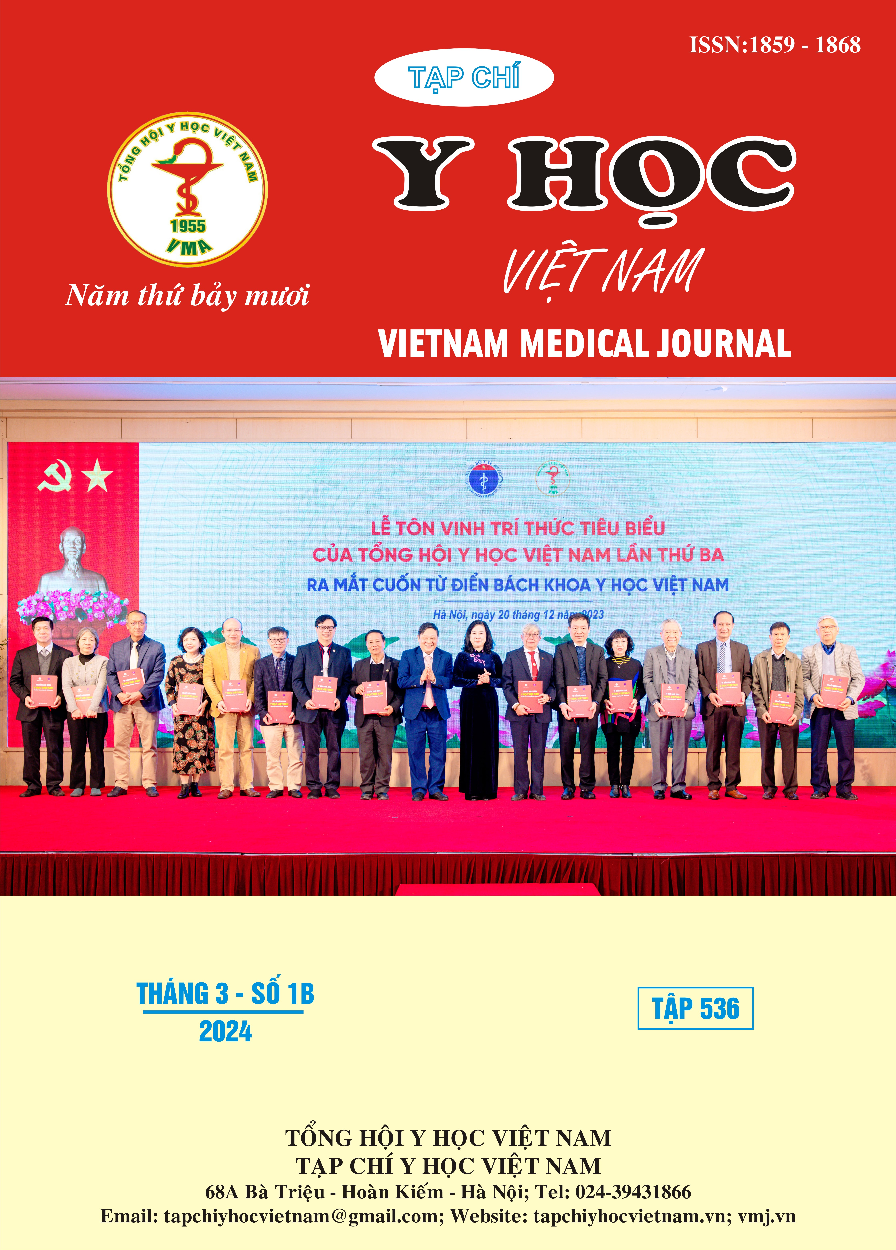SOME DISEASES CHARACTERISTICS OF OF INTESTINAL OBSTRUCTION CAUSED BY PHYTOBEAZOAR AT THAI BINH PROVINCIAL GENERAL HOSPITAL
Main Article Content
Abstract
Objective: Review some diseases characteristics of intestinal obstruction caused by phytobeazoar at Thai Binh Provincial General Hospital. Methods: Cross-sectional descriptive study, performed on 52 patients with intestinal obstruction caused by phytobeazoar operated at Thai Binh Provincial General Hospital from January to June 2023. Variables recorded: Age; Medical history (history of abdominal surgery, history of accompanying medical diseases, history of eating fiber and history of tooth loss); Clinical symptoms and abdominal X-ray; Lesions on abdominal computed tomography and lesions during surgery. Results: Mean age was 69.7 years. 30.8% had a history of abdominal surgery (17.3% had a history of gastric bypass surgery); 28.8% had accompanying medical diseases. 23.1% had a history of eating high-fiber foods, which is a risk factor for intestinal obstruction caused by phytobeazoar; 21.1% had tooth loss and poor chewing. Abdominal pain occurs in 98.1%. 100% had abdominal distention; Floating intestinal loops occur in 80.8%; Signs of snake crawling occurred in 21.1%; The mass was palpable in 5.7%; 96.2% of patients had a typical air-fluid level on abdominal X-ray. There were 48/52 cases with preoperative abdominal computed tomography. Of these, 97.9% had signs of intestinal obstruction; 66.7% saw the image that the cause of the blockage was phytobeazoar. During surgery, 92.3% had peritoneal fluid; 98.1% had intestinal dilatation. The most common location of phytobeazoar is in the ileum, accounting for 80.8%; 15.4% had phytobeazoar in 2 locations in the digestive tract; 11.5% had phytobeazoar in the stomach and intestines. Conclusion: Intestinal obstruction caused by phytobeazoar is common in the elderly. History of gastric bypass surgery, history of eating high-fiber foods and tooth loss are factors that suggest the cause of intestinal obstruction. Computed tomography is an effective method in diagnosing the cause and location of intestinal obstruction.
Article Details
References
2. Pazouki, M. Pakaneh, A. Khalaj et al. (2014), Blood bezoar causing obstruction after laparoscopic Roux-en-Y gastric bypass, Int J Surg Case Rep. 5(4), tr. 183-5.
3. Đặng Quốc Ái (2023) và Đinh Văn Chiến (2023), Kết quả phẫu thuật điều trị tắc ruột do bã thức ăn, Tạp chi Y học Việt Nam. Tập 525, tr. 5.
4. Seang Seyha (2021), Đánh giá kết quả sớm tắc ruột do bã thức ăn được phẫu thuật tại bệnh viện bạch mai, Đại học Y Hà Nội, Hà Nội.
5. Hán An Ninh (2022) và Phạm Duy Hiền (2022), Mô tả một số đặc điểm lâm sàng, cận lâm sàng và kết quả điều trị phẫu thuật tắc ruột do bã thức ăn ở trẻ em tại bệnh viện Nhi trung ương, giai đoạn 2017-2021, Tạp chí Y học Việt Nam. Tập 519.
6. S. Wang, X. Yang, Y. Zheng et al. (2021), Clinical characteristics and indications for surgery for bezoar-induced small bowel obstruction, J Int Med Res. 49(1), tr. 300060520979377.
7. R. P. G. Ten Broek, P. Krielen, S. Di Saverio et al. (2018), Bologna guidelines for diagnosis and management of adhesive small bowel obstruction (ASBO): 2017 update of the evidence-based guidelines from the world society of emergency surgery ASBO working group, World J Emerg Surg. 13, tr. 24.
8. J. H. Kim, H. K. Ha, M. J. Sohn et al. (2003), CT findings of phytobezoar associated with small bowel obstruction, Eur Radiol. 13(2), tr. 299-304.


